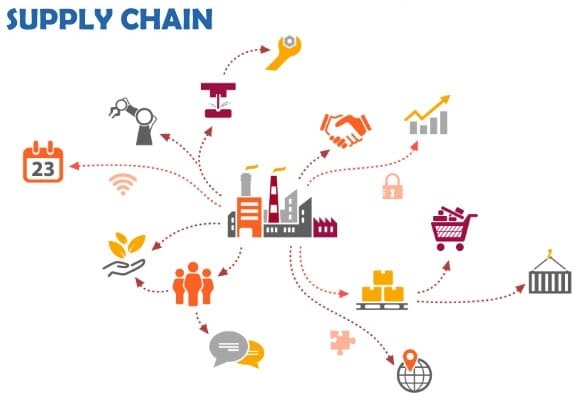What is Supply Chain?
 |
| Supply Chain Definition |
If we look at the concept of "supply chains" we will find that it means a huge interconnected network of individuals, companies, resources, and technologies involved in the manufacture and sale of a product or service.
What are the steps of supply chains in brief?
The supply chain begins with the delivery of raw materials from the supplier to the manufacturer and ends with the delivery of the finished product or service to the final consumer. Companies periodically develop supply chains so that they can reduce costs and remain competitive in business.
Supply Chain Management
Supply Chain Management can be defined as the planning and management of all activities involved in sourcing, procurement, transfer, and all logistics management activities, and also includes coordination and cooperation with channel partners, which can be suppliers, intermediaries, third-party service providers, and customers.
What are the elements of supply chain management?
If we look closely at the supply chain management process, we will find that it consists of 5 main elements, which are as follows:
- Strategy or plan, companies need a clear strategy for managing all the resources through which customer demand for their products or services is met, and therefore several measures to control the supply chain must be developed so that they are effective at lower costs and provide high quality and value to customers.
- Supplier of Goods and Services Companies select the suppliers needed to provide the goods and services they need to manufacture products and services, so supply chain managers must develop a set of pricing, delivery, and payment processes with suppliers and create metrics to monitor and improve relationships.
- Manufacturing stage, here supply chain managers schedule activities needed for production, testing, packaging, and preparation for delivery. This is the most metric-intensive part of the supply chain, the part where companies can measure quality levels in production and worker productivity.
- Delivering products to customers, and here comes the most important part called logistics, where companies coordinate the receipt of orders from customers, develop a network of warehouses, choose carriers to deliver products to customers, and create an invoice system to receive payments.
- Return or refund, which is an important part of the supply chain for many organizations, especially in the field of "e-commerce" where supply chain planners must create a responsive and flexible network to receive defective and excess products from their customers and support customers who have problems with the products received.


Comments
Post a Comment